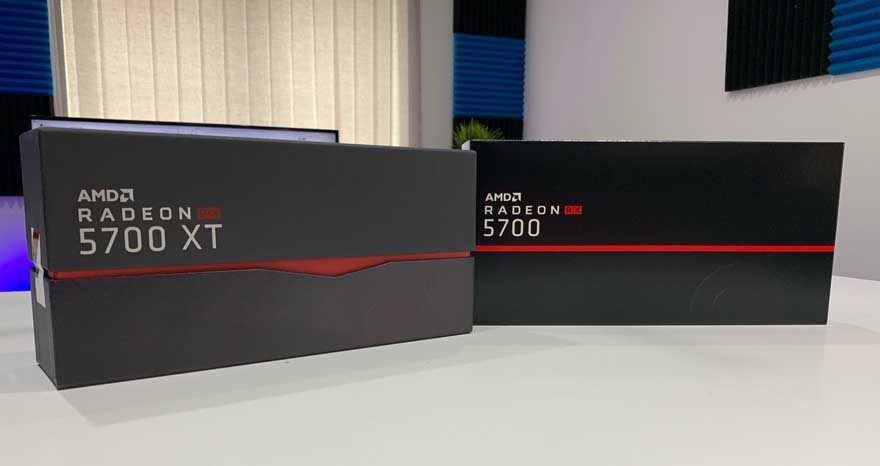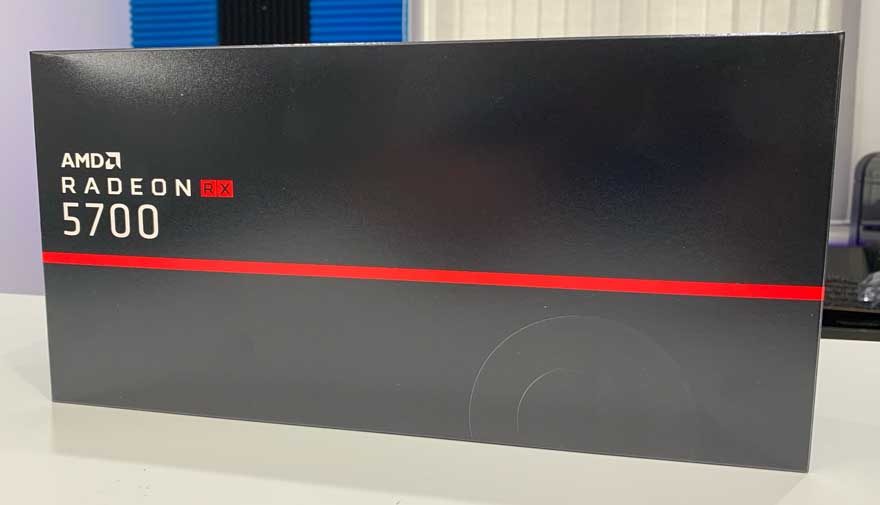AMD Radeon RX 5700 & 5700 XT Graphics Card Review
Peter Donnell / 5 years ago
AMD Radeon RX 5700 & 5700 XT
This week is shaping up to be one of the most exciting in AMD history. Not only that, but it’s also been one of the busiest weeks we’ve ever had at eTeknix too. There are dozens of new X570 PCIe 4.0 motherboards launching today, and we’ve reviewed 11 of them! Not only that, but AMD launched their 7nm 3rd Gen Ryzen CPUs too, and we’ve reviewed 2 of them. If that wasn’t enough, we now also have brand new 7nm Radeon GPUs; the 5700 and the 5700 XT. Links for all the other reviews are below!

So what’s the deal? Well, the new cards are out to tackle competition from Nvidia, with the 5700 expected to go head-to-head with the RTX 2060, and the 5700 XT against the RTX 2070. Now, what’s crazy is that I’m writing this review on the day it goes live. So, we already know that AMD has dropped their prices to counter the RTX Super launch, so this battle just got pretty fierce. But, will it be enough? Do AMD have the performance? That’s what I’m about to find out.
AMD Radeon RX 5700
The base model features 36 compute units and like the higher end XT, features their new 7nm design. Rather than the HBM2 memory, which we saw on the previous Radeon cards, they’ve opted for 8GB of GDDR6 memory this time, which has a 14Gbps memory speed, with a 256-bit interface. That gives us an impressive 448 GB/s memory bandwidth. With the GPU running at 1465 MHz up to 1725 MHz Boost, we should see performance to rival the Nvidia RTX 2060 series of cards.


AMD Radeon RX 5700 XT
While this card features the same core design at the non-XT part. It does, however, feature 40 Compute Units vs the RX 5700’s 36. It also has a much higher clock speed, which runs between 1605 MHz and a whopping 1905 MHz. This takes the card from 15.9 TFLOPS up to a much more impressive 19.51 TFLOPS. This should put it more in-line with the Nvidia RTX 2070 series of cards. Just like the RX 5700 though, it also features the same 8GB of GDDR6 memory.


Features and Technologies
All of the cards will feature the latest AMD FreeSync 2 HDR technology, and TrueAudio Next. Of course, their new RDNA core architecture is on all of the cards, as is support for the latest APIs. All of the cards feature an 8-pin + 6-pin PSU connector and AMD recommend a 600W PSU. Of course, we’ll update you with real-world power requirements when the reviews go live.
- Radeon Media Engine
- RDNA Architecture
- VSR (4K)
- Radeon™ FreeSync Technology
- TrueAudio Next
- DirectX 12
- Vulkan API
Show Me More!
- Gigabyte X570 AORUS Master Motherboard Review
- Gigabyte X570 AORUS Pro Motherboard Review
- ASUS RoG Crosshair VIII Hero (WiFi) Motherboard Review Review
- MSI MEG X570 GODLIKE Motherboard Review
- ASUS TUF Gaming X570-Plus (WiFi) Motherboard Review
- ASUS ROG STRIX X570-E Gaming Motherboard Review
- MSI MEG X570 ACE Motherboard Review
- Gigabyte X570 I AORUS Pro WiFi Motherboard Review
- Gigabyte X570 AORUS XTREME Motherboard Review
- ASRock X570 Motherboard Review
- ASUS PRIME X570-Pro Motherboard Review
- AMD Radeon RX5700 & 5700 XT Graphics Cards Review
- AMD Ryzen 7 3700X & Ryzen 8 3800X Processor Review



















